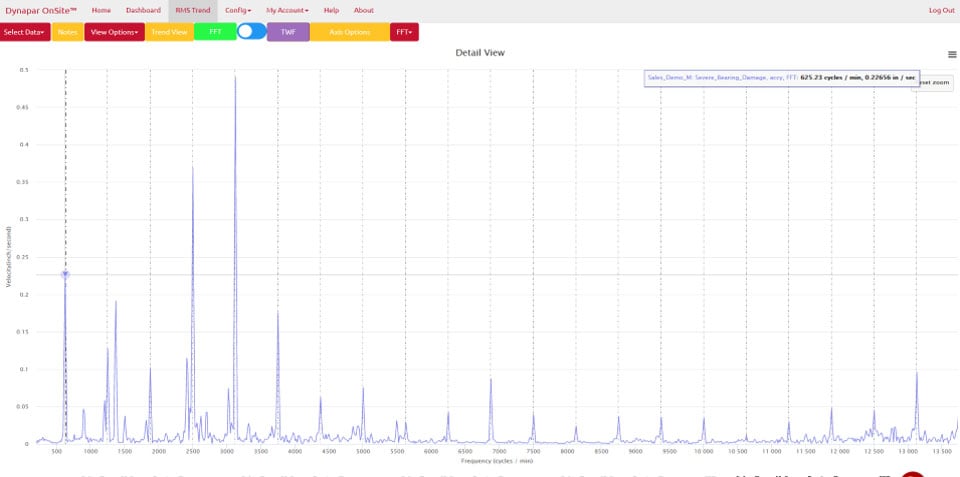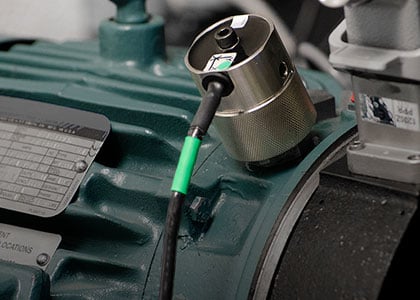Example of a fan motor bearing with the Dynapar OnSite™ Condition Monitoring System Installed
Best Asset Classes for Vibration Monitoring Programs
There are several types of asset classes that are ideal for vibration monitoring programs. Typically, machinery that’s more prone to damage requiring lengthy, expensive, or challenging repairs is ideal for vibratory monitoring, along with equipment that’s critical to production, suffers frequent damages, and requires frequent evaluation to determine reliability. Common equipment types include:
24/7 Online Vibration Monitoring
Vibration analysis provides significant benefit for optimizing the performance and maintenance of a wide range of industrial assets. The challenge is how to implement it effectively. Manual readings captured on a periodic basis can harvest useful information but machine condition continuously evolves. To monitor that condition, vibration analysis needs to take place continuously, as well. By leveraging smart components wireless connectivity, online condition monitoring systems make it possible to perform vibration analysis safely, continuously, and economically. In terms of use cases, online vibration monitoring is very effective when applied to the following.
Monitor Critical Assets
Vibration monitoring starts with critical assets, expensive equipment that would a represent substantial loss in the event of catastrophic failure. Historically, this type of equipment has been tracked using route-based vibration monitoring and, eventually, continuous online condition monitoring. Anomalies in the vibration spectrum can indicate issues such as lubrication breakdown and bearing defects sufficiently far in advance to permit timely repair, prolonging the lifetime of the asset.
Monitor Troubled Assets
Many plants operate around the clock, stopping once a month or once a quarter for scheduled maintenance. Unscheduled downtime reduces productivity and can cost from tens of thousands of dollars per hour to tens of thousands of dollars per minute. Online vibration monitoring provides a method for monitoring a troubled asset during the run-up to planned maintenance. If the condition of the equipment worsens, the line can be stopped before catastrophic failure occurs. With continuous online vibration monitoring, maintenance teams can receive immediate alerts when the condition of a troubled asset changes, enabling rapid response.
Monitor Hard-to-Reach Assets
When it comes to maintenance, the most challenging assets are not necessarily the high-value ones but those located in hard-to-reach locations such as on rooftops, inside inaccessible cooling towers, high radiation or high-temperature environments, etc. Vibration monitoring makes it possible to understand how the various components of the system are working. Maintenance can detect problems early and take action when it is convenient to forestall unplanned downtime without putting personnel at risk unnecessarily.
In today's industrial environment, management, maintenance, and OEMs seek every tool possible to maximize availability. Online vibration monitoring is an essential tool for predictive maintenance (PdM), enabling asset owners to maximize productivity and minimize downtime while increasing worker safety. With economical online condition monitoring systems, organizations can take advantage of the benefits of online condition monitoring at a user-friendly price.
Additional Resources:
Learn how to choose the best vibration sensors for rotating equipment
Learn how to develop a predicate maintenance program by starting small and scaling here
Learn how to evaluate cloud-based condition monitoring security



